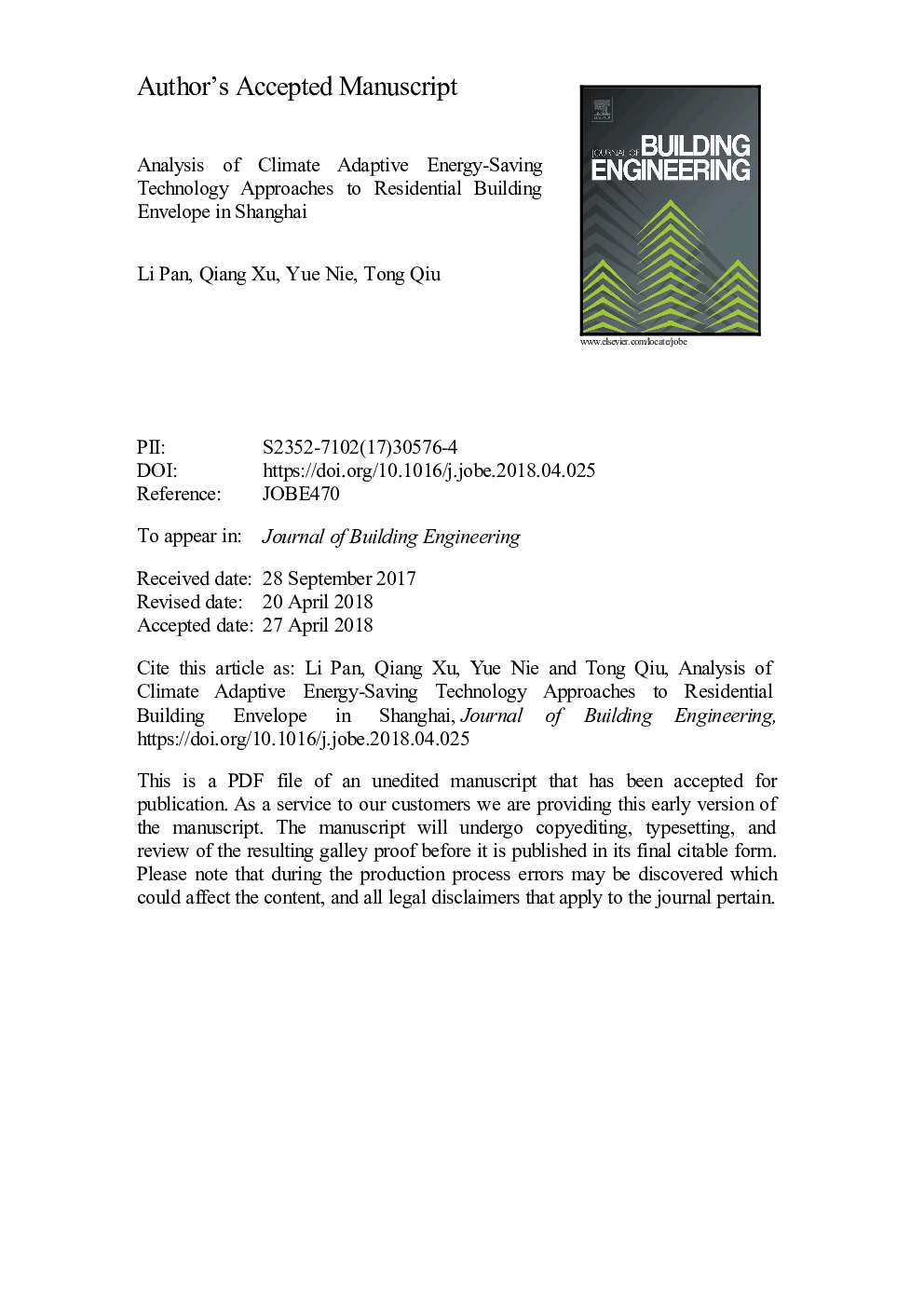| Article ID | Journal | Published Year | Pages | File Type |
|---|---|---|---|---|
| 6749762 | Journal of Building Engineering | 2018 | 14 Pages |
Abstract
In areas having both a hot summer and cold winter, there are two features that affect energy use. One is the high demand for cooling and heating, especially the cooling requirement in summer; the other is the intermittent energy use mode, which depends on whether people are at home. Over recent decades, the average environmental temperature has risen continually, and thus the building cooling load has increased significantly. At present, technological approaches to the building envelope are based on the continuous energy use mode, which needs to be optimised to fit in with local climate characteristics and energy use habits. The orthogonal analysis method is used to optimise the index values of the building envelope capacity by using energy consumption simulation, and experiments are performed to verify a suitable way of using thermal insulation layers to insulate the envelope structure. From the results, it is concluded that thermal reaction rate can be used as a factor to judge the performance of different thermal insulation types. Under an intermittent energy use mode, interior thermal insulation has a higher thermal reaction rate and lower energy consumption. In order to conserve energy, different combinations of envelope index levels are proposed for heating and cooling modes. After building with this optimised energy technology approach, it is expected that thermal comfort can be achieved with a relatively low level of energy use.
Keywords
Related Topics
Physical Sciences and Engineering
Engineering
Civil and Structural Engineering
Authors
Li Pan, Qiang Xu, Yue Nie, Tong Qiu,
